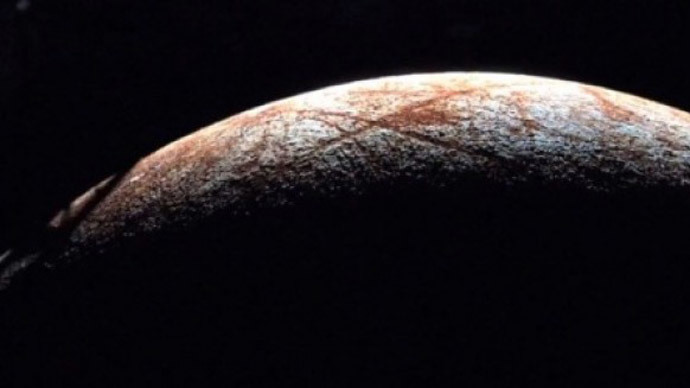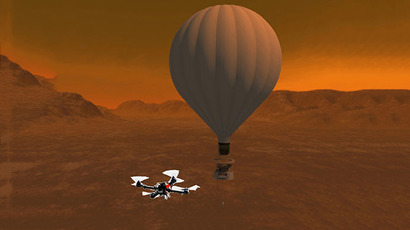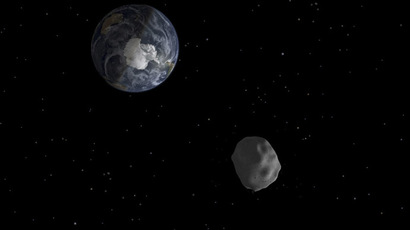Upside-down drive: NASA tests under-ice space rover

A NASA space rover to be sent to Jupiter's moon Europa has had its first run in Alaska. The tiny machine is designed to travel on underwater ice.
The Buoyant rover for under-ice exploration (BRUIE) is a two-wheeled robot, designed by NASA's Jet Propulsion Lab to study ice-covered waters of remote planets or their satellites. The main idea of the scientists was to use the underside of the ice as if it were ground.
NASA astrobiologist Kevin Hand told National Geographic: “It's the first time ever that an underwater, under-ice, untethered vehicle has been operated through satellite link.” He says, the technology works “as a wonderful marriage, advancing our understanding of what is happening on our own planet while simultaneously feeding forward into our exploration of potentially habitable worlds beyond Earth.”
And the world of Jupiter’s moon Europa is indeed a compelling destination for astrobiological research. A foot-thick ice cover of a frozen Arctic lake is a mere wafer compared to Europa’s 40km thick ice shell. Underwater tides keep the salty water ocean in a liquid state on this celestial body, which is slightly smaller than Earth’s moon.
Taking into consideration the powerful Space Launch System (SLS) rocket NASA is developing, Hand says, "We could potentially get to Jupiter and Europa very quickly." Once the planet’s sixth moon, located near half billion miles away from the sun, is reached, the search for life will start amidst ocean exploration.
"We envision a launch sometime in the early to mid-2020s," Robert Pappalardo, the leader of the JPL team, says.
The NASA mission to Europa is a large-scale operation, as three types of underwater gliders will be used: Slocum, Seaglider, and Spray – each for a different depth. To secure the access to ocean, hidden by the ice, so-called ‘cryobots’, responsible for tunneling, will make boreholes by heating it.
The first tests of an under-ice rover were conducted in 2012 in lakes near Barrow, Alaska, but since then the researchers have not only updated the design, but added some new capabilities. Rejecting tether operation, they worked the rover into a vehicle which is operated by a remote command center. What’s more, its potential to escape from entrapment in soft ice pockets was upgraded, and a dissolved methane sensor was added.














